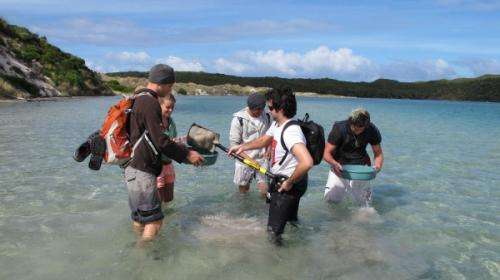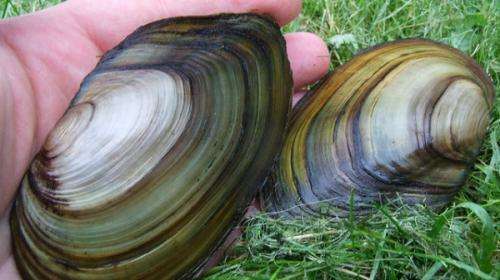Three-year study yields comprehensive insights into large bivalves

A three-year study conducted in the Walpole and Nornalup Inlets Marine Park has provided comprehensive insights into large bivalves (molluscs).
The work by the Department of Parks and Wildlife (DPaW) and Edith Cowan University provides baseline data into distribution and abundance for on-going management strategies.
"Bivalves can play an ecologically significant role in estuaries by removing nutrients from the water column, creating habitat for other organisms and providing an important prey resource for other animals," lead researcher Dr Alan Kendrick says.
"Understanding the spatial distributions...and how those distributions vary over time, both naturally and in response to human influences, is an important requirement of management and effective long-term monitoring."
However, Dr Kendrick says previous baseline studies of estuarine invertebrate communities have often had too wide a spatial scale.
Factors such as sediment grain size, salinity and the presence or absence of sea grass can vary greatly over very small areas, making detailed sampling vital to understand overall estuarine ecosystem dynamics.
With this in mind, they sampled 19 sites in shallow sand habitats of the Walpole and Nornalup Inlets, a relatively undisturbed, permanently open, temperate estuary on WA's south coast.
From this in-depth sampling, they found three bivalve species dominated: Soletellina alba, Wallucina assimilis and Paphies elongata.

S. alba accounted for three-quarters of all bivalves collected, followed by W. assimilis at 19.4 per cent and P. elongata at 3.4 per cent.
W. Assimilis appeared to be associated with the seagrass Zostera polychlamys, while P. elongata tended to occur near the estuary mouth in areas of higher water turbulence.
The abundant S. alba was the only common species widely distributed throughout the sampling area, including in areas with relatively coarse sediments, although the researchers do not yet know why this is the case.
"Sediment grain size can affect the rate which bivalves can burrow to avoid predators, and it may be that predation on some bivalve species is greater in those coarser sediments in the study area," Dr Kendrick says.
S. alba's wide distribution could also be due to water circulation and tidal flows transporting its planktonic young.
Dr Kendrick says the study highlights the tendency for estuarine communities to be dominated by relatively few species, increasing their sensitivity to impacts.
For Walpole and Nornalup Inlets, this means managers need to be aware that any disturbance to S. alba populations could have serious cascading effects for the entire estuarine ecosystem.
More information: "Spatial and temporal patterns in the distribution of large bivalves in a permanently open temperate estuary: implications for management." Marine and Freshwater Research 66(1) 41-49 dx.doi.org/10.1071/MF13209. Submitted: 5 August 2013 Accepted: 19 March 2014 Published: 26 November 2014
Provided by Science Network WA





















